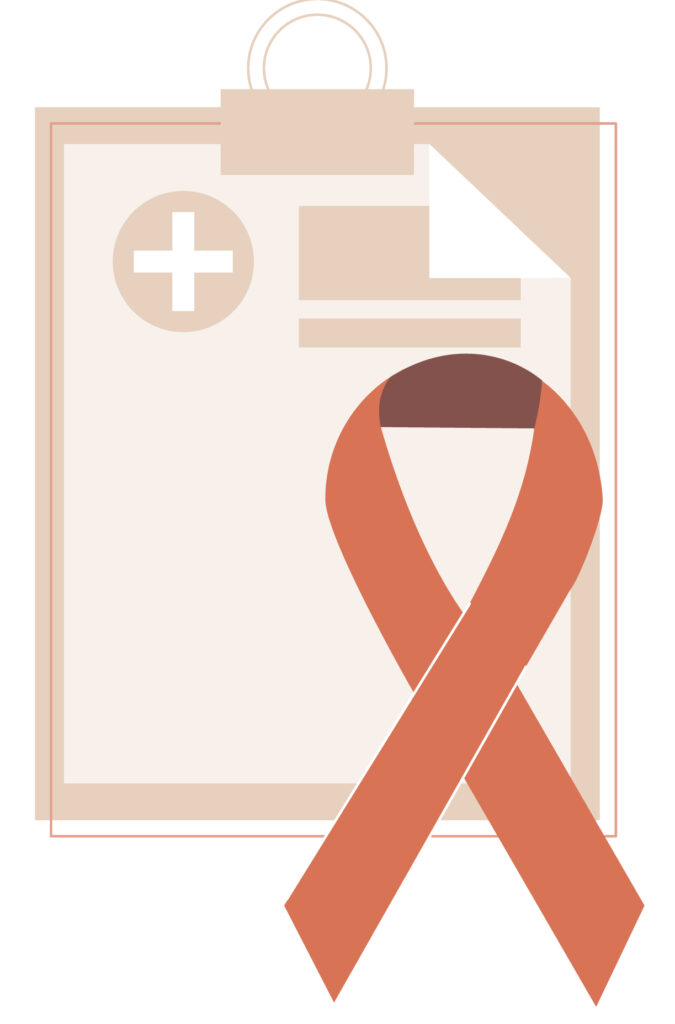Breast cancer is the second most common cancer among women in the US, yet it is also possible for men to be diagnosed too. Although males receive only up to 1% of all breast cancer diagnoses, it is usually diagnosed at later, harder-to-treat stages, leading to approximately 500 men dying from it each year in the US.
Medical professionals suggest regular screening when certain criteria are met including being under 45 with a personal history of breast cancer, those under 60 with a history of triple-negative breast cancer, those with Ashkenazi Jewish ancestry, more than one case of breast cancer in the family, or a close family member with male breast cancer, ovarian cancer, pancreatic cancer, or aggressive prostate cancer.
Doctors may advise genetic testing for mutations that increase susceptibility for developing breast cancer. Awareness of these genetic mutations is beneficial to both oneself (preparedness with breast self-exams), and family (knowledge that the genes can be passed on to following generations).
Understanding Male Breast Cancer and Recognizing the Symptoms

Everyone is born with a small amount of breast tissue, generally consisting of milk-producing glands (lobules), milk-ducts and fat. During puberty, this tissue develops more in women than in men, but the small amount of tissue present in men, is enough to be able to develop breast cancer.
The most common types of breast cancer are the same in men and women:
– Invasive Ductal Carcinoma – the cancer cells begin in the ducts, before spreading to other breast tissues. ‘Invasive’ means that it can spread to other parts of the body.
– Invasive Lobular Carcinoma – the cancer cells begin in the lobules, before spreading to other breast tissues.
– Ducal Carcinoma in situ (DCIS) – cancer cells are only in the lining of the ducts but could lead to invasive breast cancer.
Although it is unclear what causes male breast cancer, it usually occurs when certain breast cells divide more rapidly than healthy ones, accumulating to form tumors. These can then spread to nearby tissues, lymph nodes, or other parts of the body.
The most common symptoms that can be spotted in the breast include swelling or a lump, redness or flaky skin, irritation or dimpling of skin, pulling in of the nipple, pain in the nipple area and nipple discharge, and it is advisable to consult a doctor if any are present.
Diagnosis and Treatment of Breast Cancer

There are no routine screening mammograms for men, often resulting in late diagnoses of male breast cancer. Since there are significantly fewer cases, there is also less research and information about it, and many men don’t know that they can get breast cancer.
Male breast cancer can be diagnosed via a breast exam, imaging of the breast tissue via mammogram or ultrasound, or by taking a biopsy. After the diagnosis is confirmed, further tests like PET and CT scans or a sentinel node biopsy may be required. The latter can help identify the presence of specific proteins, which can help identify what’s causing the cancer cells to grow.
Breast cancer in men is treated the same way as in women: depending on the size of the tumor and how far it has spread, various treatments include chemotherapy, radiation therapy, hormone therapy, targeted therapy and surgery.
The treatments are often based on studies of breast cancer in women, but fortunately there are now more clinical trials in breast cancer that are including men as well.
Risk Factors and How to Reduce Them
There are several risk factors which increase the chance of developing breast cancer, although it does not mean that it will definitely develop. Some unavoidable risk factors include ageing, a family history of breast cancer, genetic mutations like BRCA1 and BRCA2, and Klinefelter syndrome.
Other risk factors include certain conditions affecting the testicles, radiation therapy treatment, hormone therapy treatment, liver disease, and obesity. Keeping a healthy weight and regular exercise can help lower the risk of developing male breast cancer, as well as sharing any medical history including family members with cancer or genetic mutations with your doctor.
Earlier Diagnosis Improves the Outlook of Male Breast Cancer
The size of the tumor and how much it has spread are biggest factors affecting the cancer outlook. The five-year survival rate for a tumor that hasn’t spread is 95%, which drops to 19% once it spreads away from the chest.
Men don’t regularly get checked for breast cancer, and the first sign is usually a lump, once the cancer is more developed. The earlier the cancer is diagnosed, the more the outlook can be improved.

